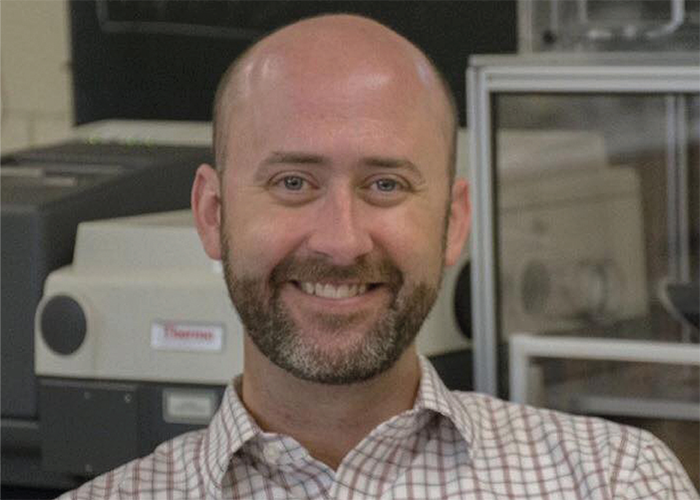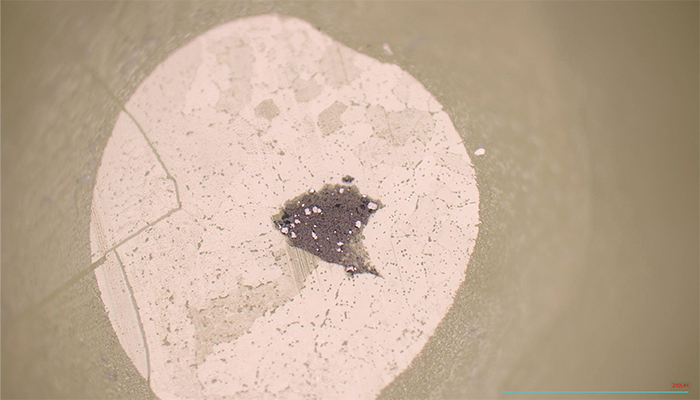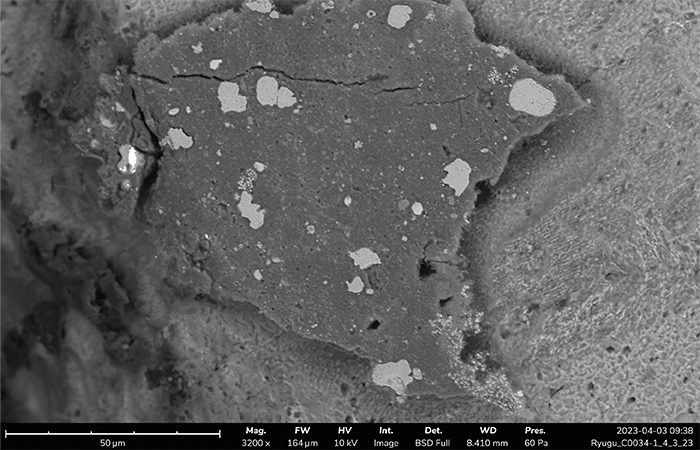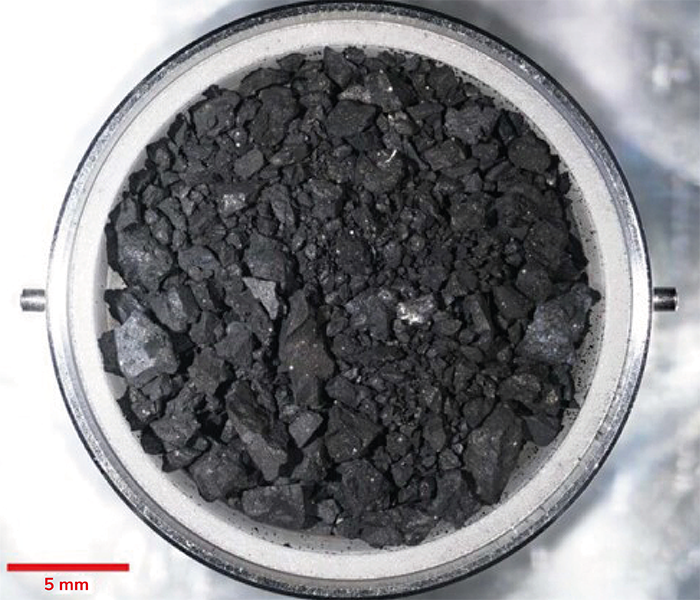Hayabusa2 – and its onboard near-infrared spectrometer – began its journey to the asteroid Ryugu on December 3rd 2014 (1).
Ryugu is compositionally very primitive – meaning it has not undergone geologic processes like core formation or volcanism that substantially altered its starting chemical composition. Its chemistry is representative of the composition of the original solar nebula – what the Sun and all of the planets in our solar system were made from. Whereas other types of asteroids, and the meteorites that we have on Earth that come from them, have undergone varying degrees of alteration, metamorphism, or differentiation, that have changed the abundances of one or more elements. Differences between these materials could shine light into the early solar system history – allowing us to start putting together a chronology of events leading to the formation of the planets.
Thanks to the spectrometer and other instruments on the spacecraft, scientists were able to characterize Ruygu’s composition and physical properties – guiding the search for the best places on the asteroid to collect the samples. Six years after departure, the Hayabusa2 spacecraft delivered an asteroid sample to Earth from Ryugu.
Here, Timothy Glotch – planetary scientist and principal investigator of the remote, in situ, and synchrotron studies for science and exploration 2 (RISE2) node of NASA's solar system exploration research virtual institute – guides us through the unknowns of asteroid research and introduces us to his spectroscopic study of Ryugu particles.

Credit: Timothy Glotch
What are the analytical techniques of choice for asteroid particle analysis?
As with any measurement, it really depends on what types of science questions you want to ask. Vibrational spectroscopic measurements are useful to understand the mineral and organic speciation of the sample, while X-ray fluorescence microscopy and X-ray spectroscopy can help us understand major and minor element abundances and speciation.
Considering that asteroid particles are small, highly porous and delicate, we prefer such analytical techniques because of their non-destructive nature. Occasionally destructive techniques might be required to understand the speciation of especially soluble organic matter, element isotopes, or trace element abundances. In the case of the Ryugu, the Hayabusa2 mission returned only about 5 g of material, so we want to use non-destructive techniques as much as possible.

Credit: Yoko Kebukawa, Tokyo Institute of Technology

Credit: Timothy Glotch
How did you analyze Ruygu particles?
We were initially allocated two particles of Ryugu returned by the Japanese Hayabusa2 mission, each about 1 mm across, which we interrogated with a number of laboratory spectroscopic techniques.
We prefer to measure mineralogy and organic speciation at the nano-scales to get an understanding of the levels of heterogeneity in the samples, and, by implication, the thoroughness of the geochemical processes that were acting on the samples. The problem with using only nano-scale analyses on big samples (and 1 mm is big in this case!), is that it’s a bit like trying to examine a landscape by looking through a pinhole.
So, due to the resolution related limitations with the micro-scale instrumentation, we decided to adopt a combination of micro- and nano- approaches. For example, the X-ray synchrotron beamline we used to map phosphorus and sulfur abundance and speciation was limited to a beam size between ~5-10 µm.
Ultimately, the micro-scale measurements were very useful for providing context to better understand the nano-scale analyses. So, our synchrotron X-ray, micro-Raman, and micro-FTIR measurements helped us to both target and understand the nano-IR data that we subsequently acquired.
What were your main findings – and what are the implications?
Our measurements were able to identify a number of features in the asteroid samples that will help us constrain the geochemical environment of the Ryugu parent body and the nature of the fluids that altered the Ryugu materials.
Using nano-IR measurements, we identified a wide variety of organic carbon species and at least two types of phyllosilicate minerals in the sample matrix. Further analysis with micro-Raman spectroscopy of these carbon species allowed us to constrain the post-formation maximum temperature in the samples to <80 °C, which tells us that the Ryugu materials underwent very little thermal alteration.
We also identified numerous minerals, instances of iron sulfide (pyrrhotite), a population of Fe-Ni sulfides and phosphate grains in the samples with synchrotron X-ray finer-scale energy dispersive X-ray spectroscopy (EDS) measurements. Our sulfur analysis indicated that about 90 percent of the sulfur was present as sulfide, but about 10 percent appears to be sulfate. This is somewhat unexpected, and this large sulfate abundance probably includes some contribution from sulfide that converted to sulfate upon exposure to Earth’s atmosphere.
These measurements paint an overall picture of an asteroid whose bulk chemistry has not been changed since the start of the solar system, but still underwent significant isochemical alteration.
The original igneous minerals that made up the asteroid have been almost completely changed to clay and serpentine minerals by aqueous alteration, and then warm waters percolating through the asteroid further deposited sulfide, oxide, and phosphate minerals, and provided the means for the formation of a rich variety of complex organic molecules.
We’re trying to use the detailed inventories of minerals and organics to constrain things like the oxygen content, pH, and temperature of the fluids that contributed to the chemical alteration.

CreditL JAXA
What are the limitations of spectroscopy in the analysis of these particles? And what advances are required?
Geoscientists will often prepare polished thin sections of rocks or minerals on slides so analytical measurements can be made on flat surfaces. Due to the physical frailty of these samples, it is enormously difficult to prepare thin sections without contaminating large portions of the sample with epoxy.
Nano-IR measurements do best with flat surfaces, so we have to prepare the samples using a focused ion beam (FIB) or microtome. As with most spectroscopic techniques, we’re always trying to push the boundaries of what we can do and the limitations usually come down to the signal to noise ratio (SNR) at the wavelength of interest and the spectral range available for any given instrument. Instrument and detector engineers are always improving the capabilities of the instruments, so I would expect the SNR, spectral range, and spatial resolution to improve in the coming years.
I could also see machine learning techniques being extended to nano-IR measurements of geologic materials. My former student, Laura Breitenfeld, used machine learning algorithms to interpret the Raman spectra of the near-Earth asteroid Bennu (2). Of course, that research required the collection of hundreds of laboratory spectra of relevant minerals and mineral mixtures to build a training set to “teach” the model.
What’s next in the field of asteroid analysis?!
With the current Ryugu samples that are available to the scientific community and the impending return of samples from Bennu by NASA’s OSIRIS-REx mission, the future of asteroid analyses is very bright! These materials are pristine pieces of the solar system that will continue to provide amazing insights into its early history.
I’m very interested in applying the lessons learned from this work, especially the nano-IR methodologies to lunar samples – both those that were brought back by the Apollo astronauts more than 50 years ago and more recent samples that will be returned to Earth by the Artemis astronauts in the coming decade.
With continued infrared spectroscopic analyses, we’ll also continue to improve our ability to link laboratory measurements with telescopic measurements of asteroids throughout the solar system, which is important for understanding the spatial distributions of different asteroid types and the origins of the thousands of meteorites that have been collected from different locations on Earth.
References
- NASA (2023). Available at: https://bit.ly/47SBZSd.
- LB Breitenfeld et al., AGU (2021). DOIi: 10.1029/2021JE007035.




